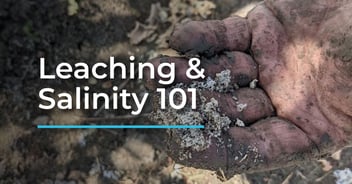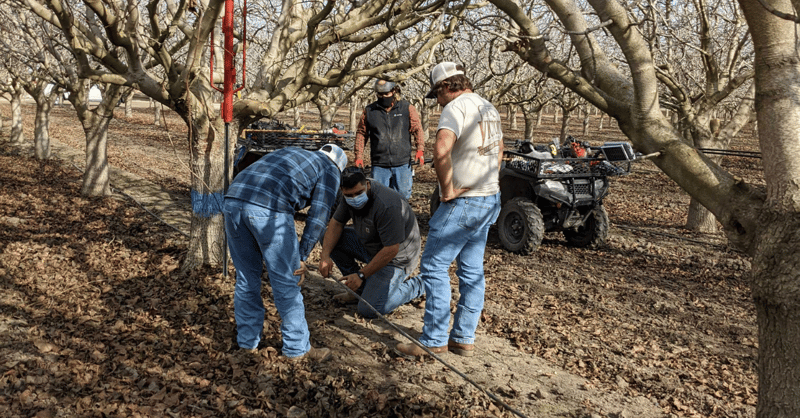
One of the most difficult parts of irrigation is that we can’t go out into the field and look into the soil with our eyes to see how well we are doing. Soil moisture sensors, line pressure, and weather data help us to get a better picture of what the current state is and what we can do to keep the soil in good condition. Here is an example of how we have found it useful to use on a day-to-day basis.
Monitor Soil Moisture
Soil moisture probes can be used to report available water content (AWC). AWC is the percentage of how much water is available to a plant, similar to a gauge measuring how full a reservoir is.
With water being one of the most important crop applications, accuracy is critical to ensure you’re getting meaningful soil moisture data you can work with. To this end, calibration is very important which is why Semios provides a measured, rather than estimated calibration.
The probes are calibrated to detect Field Capacity (FC) and Permanent Wilting Point (PWP) individually at their specific location in the field. FC is 100% and refers to the maximum amount of water the soil can hold. PWP is 0% meaning the plant can no longer extract water out of the soil.
Another important factor is Management Allowed Depletion (MAD) which is the trigger point for irrigation. It is the point at which you will want to irrigate so that your crop doesn’t experience undue stress.
Semios includes all these factors in an integrated irrigation planner to help growers and their irrigation consultants make the most effective use of their water.
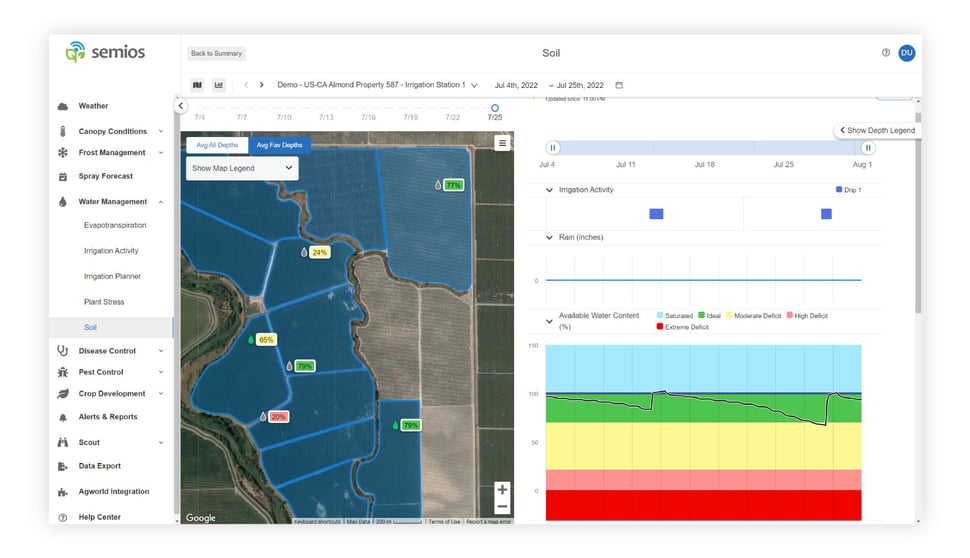
Use the Infiltration Map
We are used to seeing soil moisture line graphs. They can be useful with practice and a good amount of thinking, but what if we could visualize soil moisture as if we were looking at a cross-section of the soil? The infiltration map does just that. Instead of showing soil moisture as a line, it is represented at each depth by a color. This allows you to visualize how water moves through the soil, how deep it reaches with each irrigation, and how quickly it is used by the crop. With a little practice it can also give insights into soil changes such as impermeable layers, hardpans, and high water tables. It's a new way to look at the same data, but is much more intuitive and natural to interpret.
Monitor Irrigation Line Pressure
The sensors we install on irrigation lines do much more than just sense when the water is on or off, they are also able to report the exact pressure in the line. We present this information both as an on and off status and the actual pressure when water is on. You can use this data to check on the health of your irrigation system; verify that you are operating at optimal pressures, see when filter flush events are occurring, if they are effective, and if manual flushing is required. A longer term look at the data can also help you to see if your pump's performance is keeping up over the course of the season.
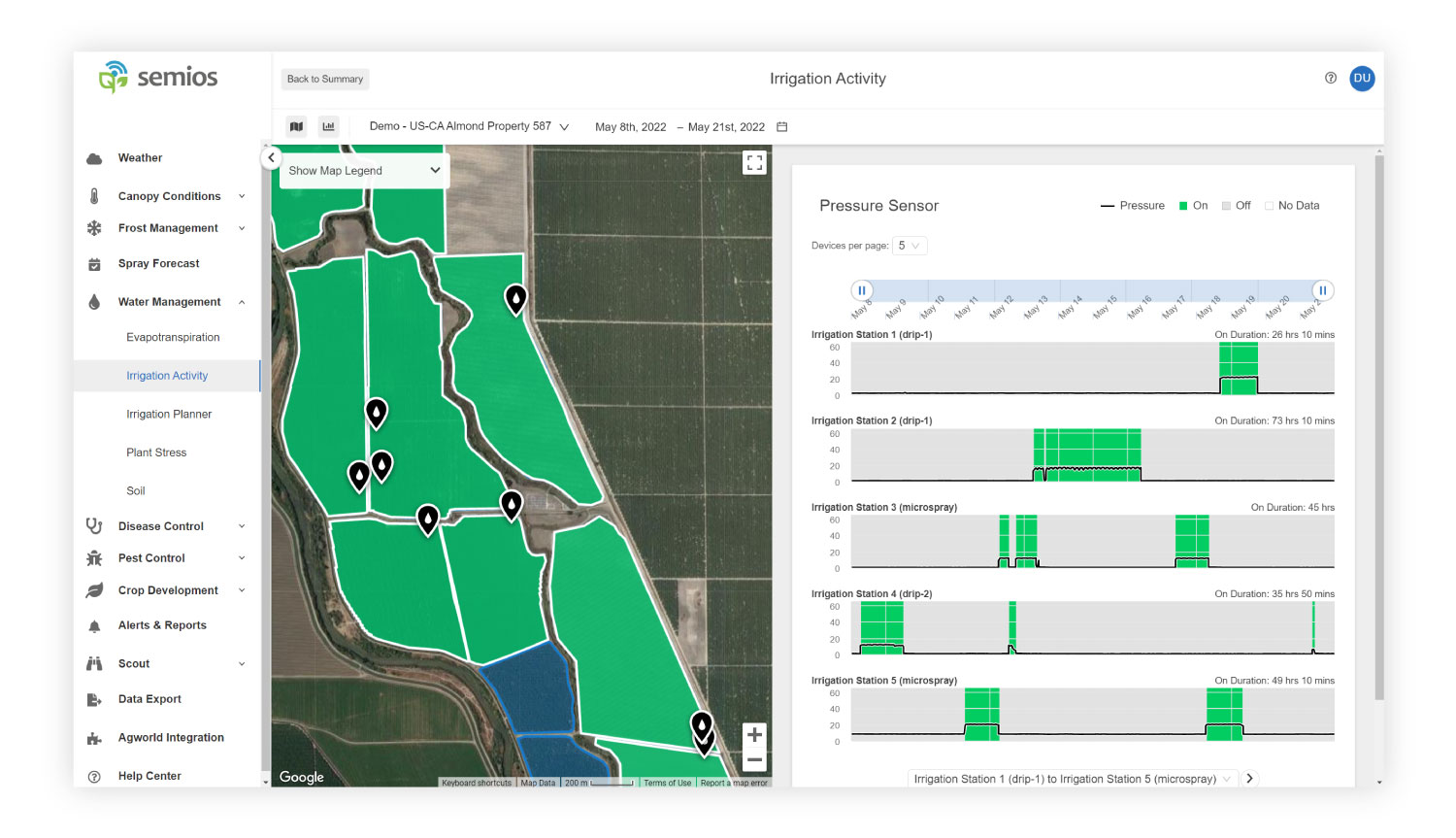
Track Evapotranspiration (ET)
ET tracking is an important irrigation management practice that involves using weather station information to understand how much water your trees will require in a given week. Having a good understand of your field's ET will ensure that the water you apply matches your plant's demands. Another way to think of ET is ‘water in = water out’. To verify this match, growers will install pressure transducers in the irrigation lines to track on/off irrigation activity.
Historically, many growers have relied on publicly available or regional weather stations for their ET information. The trouble is, these stations could be miles away from your orchard and situated in very different topography. To get the most accurate ET readings, Semios in-canopy sensors track ET in-canopy, provide 7-day forecasts and even compare your field's ET with the nearest public station for reference.
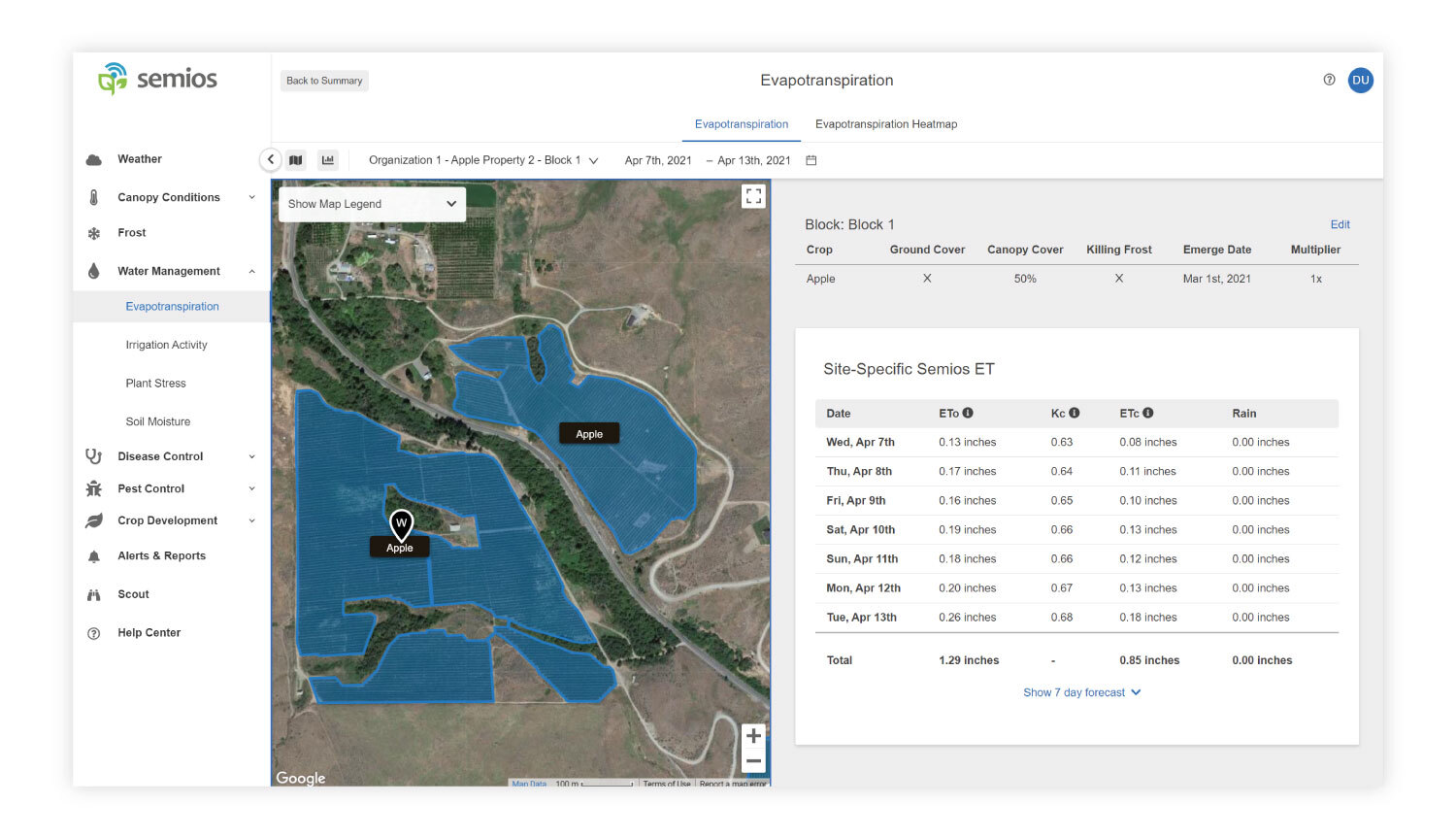
Use the Salt Map
Salts play a critical role in the health of soils and in proper irrigation management. From fertilizer applications, to hard pans, to salt build up from ground water, a view of salt activity has always been one of the major requests we receive from our customers. We are the first and only company that is able to provide a real-time look of salt accumulation and movement in the soil. Using a relative measure of ion content we give you a view of the ways salts build up, move and accumulate in your soils. With this tool you can see the areas with higher amounts of salts compared to others. Hardpans often show up as an area with higher salts and fertilizer applications can be seen as increased salts in the surface that dissipates as the crop uptakes the nutrient or as the fertilizer moves deeper into the soil. At the end of the season, the success of your leaching plan can be evaluated based on how much the salts move through the process. Outside of annual soil tests, we have always been blind to salt in the soil. With the salt map, we are blind no more.

Incorporate Dendrometers
Dendrometers are plant health sensors that show the plant’s response to applied water. Dendrometers are installed in the trunk of the tree to measure the expansion and contraction of the trunk throughout the course of the day. The trunk expands during night as the roots uptake water and contracts during the day as water transpires through the leaves.
Semios displays trunk displacement, daily gain, maximum daily shrinkage, and tree water deficit to help growers and their irrigation managers observe plant water stress and make informed irrigation decisions based on the plant’s response.
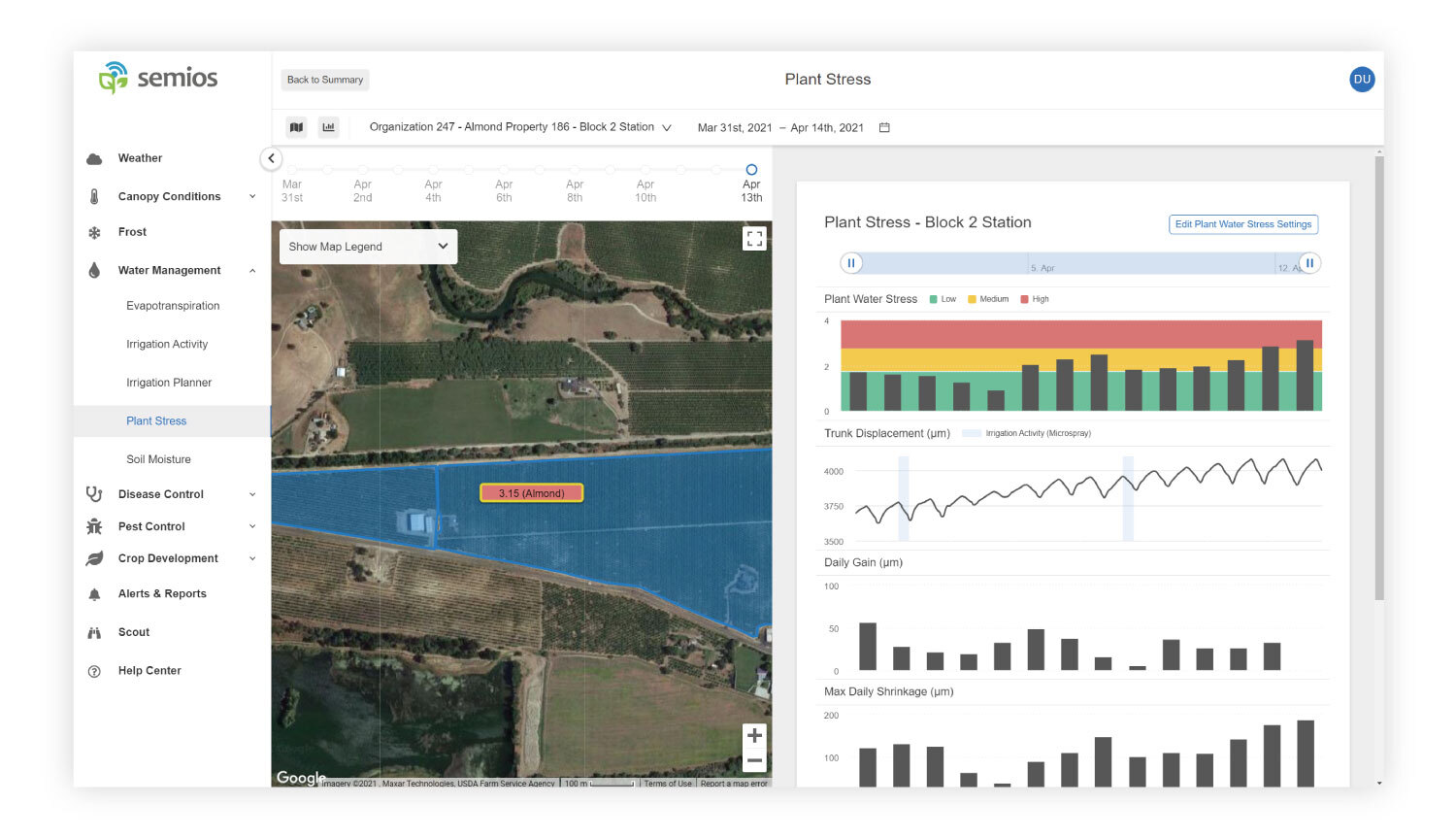
Getting To The Root Of It
The most difficult aspect of irrigation is that we can't walk through the roots to observe the health of the soil and roots. Semios water management tools provide granular insight into how your irrigation program is performing. By bringing all your irrigation-based information into one place, you can make your most important decisions quickly and with more confidence.
Related Posts
How Rain Can Impact Irrigation Planning

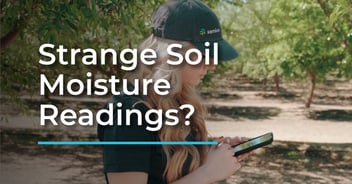
.jpg?width=352&name=3-Reasons-to-Monitor-your-Winter-Crops-Preview-Image%20(1).jpg)
